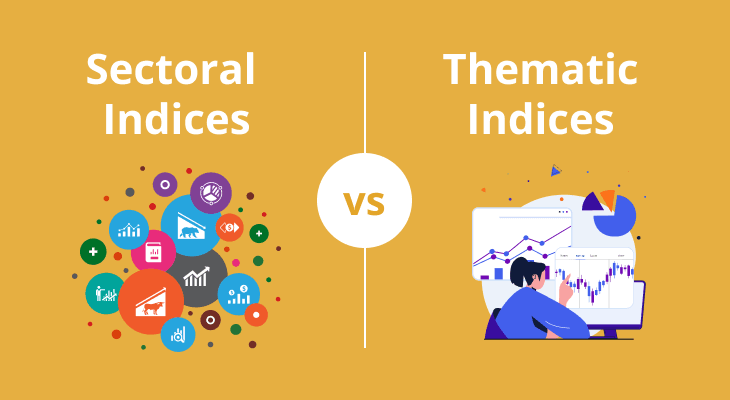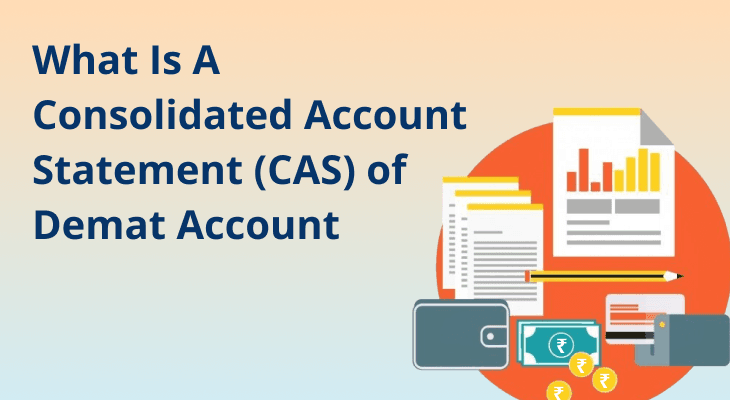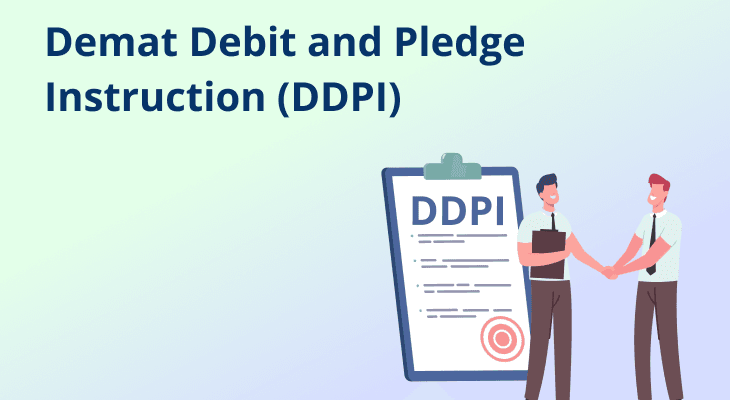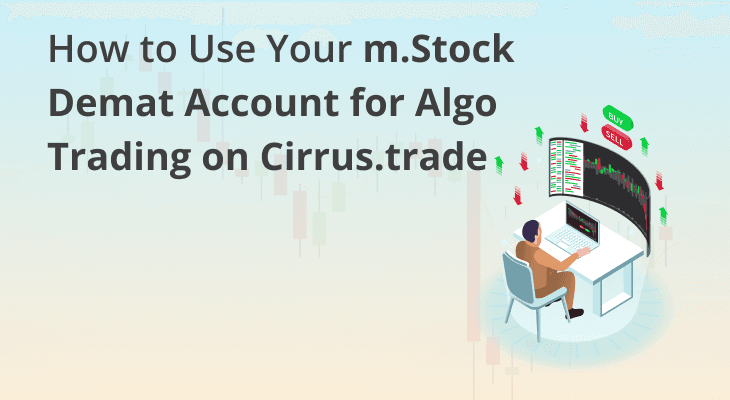
Difference Between Sectoral And Thematic Indices
Most people start their investment journey with broad market indices like Nifty 50 or Sensex. As you advance, you may want targeted exposure to specific parts of the market. That is where sectoral indices and thematic indices come in. Both are designed to focus your investment on niche areas of the market, but they do so in very different ways. Understanding the distinction is important because it affects diversification, risk concentration, return drivers, and how you should use these indices in a long-term plan.
This guide explains each type in simple language, compares them across important factors, shows practical examples, and offers a step-by-step way to include them within your mutual fund or ETF allocation.
Introducing Sectoral vs Thematic Indices
Sectoral and thematic indices are both specialised benchmarks. They allow you to invest in a curated basket of companies without picking individual stocks. The key difference is the organising principle.
- Sectoral indices group companies by industry classification, such as banking, IT, pharma, or FMCG.
- Thematic indices group companies by an investment idea that cuts across many industries, such as digitisation, consumption, infrastructure, or renewable energy.
Knowing which lens you are using, industry or idea, is the foundation for choosing the right index.
What Are Sectoral Indices?
Definition & Purpose:
A sectoral index tracks companies that operate in the same industry or closely related industries. For example, a Banking index includes lenders and financial institutions, an IT index includes software service providers, and a Pharma index includes drug manufacturers.
Why investors use sectoral indices:
- To express a clear view on one industry, for instance, banking credit growth or IT export demand.
- To complement a core broad-market allocation with a targeted overweight in a sector expected to outperform.
- To simplify compliance and research, since the drivers are broadly similar within a single industry, such as regulation for banks or FDA approvals for pharma.
What drives returns:
Industry cycles, regulation, commodity and input prices, demand trends, and currency movements where relevant. Because all constituents are in the same industry, correlations are high, which increases concentration risk during downcycles.
What Are Thematic Indices?
Definition & Purpose:
A thematic index tracks companies that benefit from a broader trend or idea, even if they belong to different industries. Examples include consumption, infrastructure, ESG, or Digital India. A Consumption theme might include FMCG companies, quick service restaurants, select retailers, and payment service providers.
Why investors use thematic indices:
- To participate in multi-year trends that cut across sectors, such as urbanization or clean energy.
- To diversify beyond a single industry while still expressing a focused view.
- To build a satellite position that aligns with personal convictions, for example, sustainability or technology adoption.
What drives returns:
Adoption curves, policy incentives, capital expenditure cycles, demographic shifts, and technology penetration. Because themes span many industries, correlations are lower than a pure sector, but still more concentrated than a broad index.
Sectoral vs Thematic: Side-by-Side Comparison
Sectoral indices are like ordering everything from one aisle in a supermarket. Thematic indices are like building a basket for a recipe, pulling items from several aisles that work together toward one dish. Sectoral bets are simpler to analyse but more exposed to one industry’s downcycle. Thematic investments can be more diversified but require additional homework to understand how components actually tie to the theme. Here’s a quick comparison between the two indices.
Comparison Table
Dimension | Sectoral Indices | Thematic Indices |
|---|---|---|
Organising principle | Single industry classification | Cross-industry investment idea or trend |
Diversification | Lower, because constituents share the same industry cycle | Moderate, because constituents span multiple industries |
Key drivers | Industry regulation, margins, competition, input costs | Policy support, adoption trends, demographics, capex cycles |
Concentration risk | High, due to industry clustering | Moderate, but may still tilt to a few dominant sub-industries |
Stock selection method | Companies must belong to the defined sector | Companies must benefit meaningfully from the chosen theme |
Cyclicality | Often pronounced, tied to sector cycle | Dependent on theme maturity and policy momentum |
Rebalancing and turnover | Periodic, typically rules-based within the sector | Periodic, rules may adjust to maintain theme purity |
Use case | Express a strong view on one industry | Express a strong view on a secular trend across industries |
Examples | Banking, IT, Pharma, FMCG | Consumption, Infrastructure, Digital, Renewable energy |
Typical cost and liquidity | Often better liquidity in popular sectors | Varies; niche themes may have wider spreads and higher costs |
When To Use Sectoral or Thematic Indices
There is no single correct answer, only the right choice for your situation. Use the checklists below to guide you.
Choose a sectoral index when:
- You hold a documented view on one industry, for example rising credit growth and stable asset quality for banks.
- You are comfortable with higher concentration and can tolerate sector drawdowns.
- You want a precise overweight to complement a broad market core.
Choose a thematic index when:
- You want exposure to a secular story that spans many industries, for example domestic consumption or renewables.
- You prefer moderate diversification within a focused idea rather than a single-industry bet.
- You are willing to understand how different business models contribute to the theme.
Position sizing tip:
For most beginners, consider keeping sector or theme exposure as a satellite allocation of say 10 to 15 percent of equity holdings, with the core in broad market funds. Scale gradually and rebalance annually.
Risks And Considerations
Beginners should go in with clear eyes. The potential for outperformance comes with identifiable risks. Introduce these carefully in your plan.
1. Volatility and Timing
Both sectoral and thematic indices can be more volatile than broad indices. Sectoral exposure tends to move sharply with industry cycles. Thematic exposure can lag when a theme pauses or policy support wanes. Avoid building large positions based on short-term news. Prefer systematic investments and pre-decided review dates.
2. Overlap and Concentration
Themes can secretly concentrate in a few names that dominate the trend, while sectors are concentrated by design. Also watch for overlap with your core holdings. For example, a broad index already includes banks and IT. Adding a separate Banking or IT fund increases exposure to the same stocks.
3. Cost and Management
Expense ratios, tracking error for index funds or ETFs, and liquidity spreads matter. Niche thematic ETFs can have higher costs or wider bid-ask spreads. If you choose an index fund route, check tracking differences over at least 1 to 3 years. For ETFs, ensure your broker offers sufficient liquidity access during market hours.
Practical Examples or Case Studies
Case 1: Sectoral Banking Allocation
An investor believes credit growth will pick up with stable inflation and falling interest rates. They add a Banking sector index fund as a 15 percent satellite investment. When the rate cycle turns favourable, banks may expand margins and loan books. If a credit shock hits, this position can underperform sharply, illustrating concentration risk.
Case 2: Consumption Theme
Another investor expects rising disposable incomes to drive demand for packaged foods, retail, and payments. They choose a Consumption thematic index to capture FMCG, retail chains, and payment networks together. One or two sub-industries may face temporary headwinds, but the diversified theme can still participate in the broader trend.
Case 3: Renewable Energy Theme
A climate-focused investor believes policy incentives will accelerate solar and wind investments. They choose a Renewables thematic index that includes utilities, equipment makers, and specialty chemical suppliers. Returns are tied to policy continuity, input commodity prices, and technology costs, not just electricity demand.
How Investors Can Incorporate Indices
A simple and repeatable approach keeps things manageable for beginners.
- Build a core first:
Start with diversified broad-market funds or ETFs. This anchors your portfolio to the economy’s overall growth. - Add satellites for views:
Introduce one or two sectoral or thematic indices based on your conviction and research. Keep combined satellite exposure within a pre-decided band. - Use SIPs to average costs:
Sector and theme funds can be volatile. A monthly SIP helps average entry prices and reduces timing risk. - Rebalance periodically:
Once or twice a year, restore your target weights. Trim what has outgrown its allocation and add to what has lagged, provided your original thesis stands. - Monitor drivers, not headlines:
For sectoral indices, track industry specific metrics such as credit growth for banks or order books for capital goods. For themes, follow adoption indicators and policy updates.
Conclusion
Sectoral and thematic indices are powerful tools to customise your equity exposure. Sectoral indices offer a pure play on one industry, which is simple to analyse but comes with concentrated risks. Thematic indices let you invest in wider trends that cut across industries, offering moderate diversification with a focused tilt. For most beginners, the sensible route is a broad-market core, with smaller, well-researched sector or theme satellites added gradually through SIPs, monitored and rebalanced on a set schedule. Keep your costs reasonable, understand what actually drives your chosen index, and always align exposure with your risk tolerance and time horizon
Also Read: Types of Index Funds and How They Work
FAQ
Are thematic indices just rebranded sector funds?
No. Sectoral indices include companies from a single industry such as banking or IT. Thematic indices cut across multiple industries that benefit from one idea, such as consumption or digital services. A theme might include FMCG, retailers, payment providers, and logistics together, which is broader than any single sector.
Which is more diversified, sectoral or thematic indices?
Thematic indices are generally more diversified because they spread across multiple industries, although concentration can still occur in a few large constituents. Sectoral indices are focused by design, so correlations among constituents are higher. Diversification ultimately depends on the number of holdings and how they are weighted.
Can I hold both sectoral and thematic indices in one portfolio?
Yes, but do so within a planned satellite allocation. Ensure the combined exposure does not overwhelm your broad-market core. Check for overlap with your existing funds and set a maximum allocation to specialised indices, then rebalance periodically to keep risk in check.
Which is better for beginners, sectoral or thematic indices?
Beginners are usually better served by a core of broad-market funds. If you want to add focus, start with a small thematic exposure because it can provide cross-industry diversification around a trend. Sectoral funds are best used when you have a well-researched view on one industry and can handle cycles.
How do costs compare between sectoral and thematic index funds or ETFs?
Broad-market passive funds tend to have the lowest expense ratios. Specialised sector or theme funds and ETFs may charge more due to smaller size, higher turnover, or liquidity management. Always compare expense ratios, tracking error, and bid-ask spreads before choosing the vehicle.
What is the biggest risk with sectoral indices?
Concentration in one industry. If the sector faces regulatory changes, margin pressure, or a demand slump, the entire index can decline together. Because constituents are highly correlated, drawdowns can be sharper than in a broad-market index. Set strict position limits and diversify elsewhere.
What is the biggest risk with thematic indices?
Theme durability and purity. A theme can fall out of favor, get delayed by policy changes, or drift from its original idea over time. Some indices may include companies with only partial exposure to the theme, diluting impact. Review methodology documents and holdings periodically.
How often do these indices change their constituents?
Most indices review and rebalance semi-annually or quarterly based on predefined rules. Sectoral indices will replace companies that no longer meet liquidity or market-cap thresholds for that industry. Thematic indices rebalance to maintain exposure to the underlying trend, adjusting weights or names as needed.
Should I use SIP or lump sum for sectoral or thematic funds?
SIPs are usually better for beginners because they average out the higher volatility typical of focused indices. Lump sums can be considered when valuations are attractive or after a market correction, but you must be comfortable with short-term swings and have a clear thesis.
How do I decide allocation between sectoral and thematic indices?
Start from your goals and risk tolerance. Keep your broad-market core as the largest piece. Add one or two focused exposures that you understand well, and cap the combined allocation, for example 10 to 15 percent of equity. Review annually, rebalance, and be ready to reduce exposure if the thesis changes.


